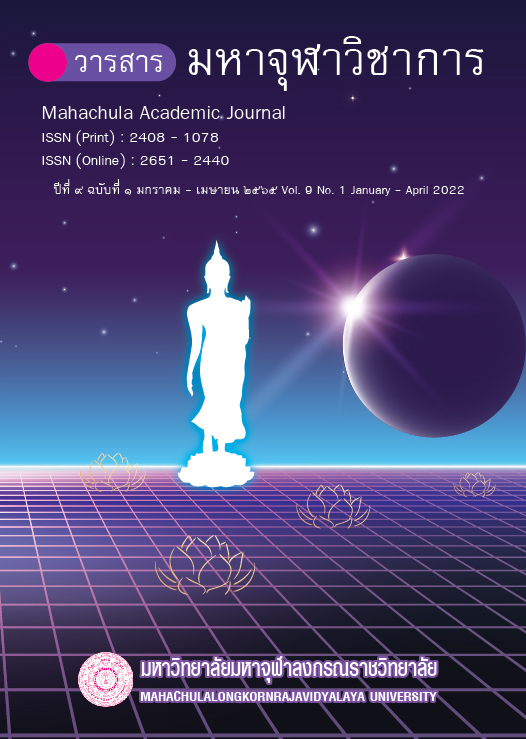Curriculum and Instruction Development
Main Article Content
Abstract
The article presents the concept of Curriculum and Instruction Development, which is important of teaching management. Because of define regulation of teaching management to achieve destination. The best curriculum always have to development in order to be the best contant by the way to abreast condition for transition of social, economy, technology and politics. Taba said that Curriculum Development is changing and improve the old curriculum to be better. On the other hand put the aim, the substance, Instruction, evaluation, and another. To succeed the new aim must be improve and curriculum development all the education system until the aim and approach so curriculum development will be affect though and felling every accessory. Curriculum improvement is changing the part of curriculum but not change the concept or curriculum of format. Good gives his opinion that the curriculum development will happen 2 types to be Adaptation and Change curriculum. The adaptation curriculum is the approach to curriculum development for being proper school system, aim of instruction, material tool, teaching means including evaluation. The change curriculum is amend curriculum to be different from the old curriculum and then create the opportunity instruction. Saylor and Alexander give meaning that curriculum development have to make the old curriculum to be better or make the new curriculum by no more the old curriculum. The curriculum development may be mean including make documents for the students.
The meaning of curriculum development from above the educators sum up that curriculum development is making the curriculum, the adaptation curriculum, and changing the curriculum to be better for being appropriate human and state of society.
Article Details

This work is licensed under a Creative Commons Attribution-NonCommercial-NoDerivatives 4.0 International License.
References
ทิศนา แขมมณี. ศาสตร์การสอน : องค์ความรู้เพื่อการจัดการกระบวนการเรียนรู้ที่มีประสิทธิภาพ. พิมพ์ครั้งที่ ๖. กรุงเทพมหานคร : สานักพิมพ์แห่งจุฬาลงกรณ์มหาวิทยาลัย, ๒๕๕๕.
บุญพิศ นัยน์พาณิช. “การสอนพระพุทธศาสนาตามแนวนวังคสัตถุศาสน์”. วารสารมหาจุฬาวิชาการ. ปีที่ ๑๗ ฉบับที่ ๓ (กันยายน-ธันวาคม ๒๕๖๓) : ๓๐๙.
สำนักงานปฏิรูปการศึกษา. พระราชบัญญัติการศึกษาแห่งชาติ พ.ศ. ๒๕๔๒ และพระราชกฤษฎีกาจัดตั้งสำนักงานปฏิรูปการศึกษา พ.ศ. ๒๕๔๒. กรุงเทพมหานคร : พริกหวานกราฟฟิค, ๒๕๔๒.
Good, Carter V. Dictionary of Education. New York: McGraw. Hill Book, 1973.
Marsh, C.J. Perspectives: Key Concepts for Understanding Curriculum. London: Falmer Press, 1997.
Richey, R. C., Klein, J. D., & Tracey, M. W. The instructional design knowledge base. New York: Taylor & Francis, 2011.
Romiszowski, A.J. Designing instructional systems: Decision making in course planning and curriculum design. New York: Nichols, 1981.
Saylor, J.G., W. Alexander and A. J. Lewis. Curriculum Planning for Better Teaching and Learning, New York: Holt, Rinehart and Winston, 1981.
Sturman, M. Don qulxote: Notes including life and background of cervantes, chapter summaries and critical commentaries, purpose of the novel, technique and style, characterization, themes, questions of discussion, selected bibliography. Lincoln, Neb: Cliffs Notes, 1989.
Taba, H. Curriculum development theory and practice. New York: Harcourt, Brace and World, 1962.
Tyler, R. W. Basic Principle of Curriculum and Instruction. Chicago: University of Chicago Press, 1949.


